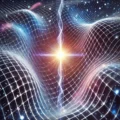Theoretical Physics, String Theory, Gravity, Emergent Spacetime
Introduction
Erik Verlinde (1962 to present) is a Dutch theoretical physicist whose research has significantly influenced string theory, quantum gravity, and the emerging paradigm of gravity as an emergent phenomenon. He is best known for proposing the entropic gravity framework, which recasts gravity not as a fundamental interaction, but as a macroscopic statistical effect arising from microscopic informational degrees of freedom encoded in spacetime. This radical reinterpretation of gravity challenges long-standing assumptions of General Relativity and aligns with broader efforts to unify gravity with quantum mechanics.
Verlinde’s ideas offer a compelling perspective in the search for a theory of quantum gravity, linking thermodynamics, information theory, and holography in a fundamentally new way. He continues to be a prominent voice at the intersection of theoretical physics, cosmology, and information-based approaches to spacetime structure.
Early Life and Education
Erik Verlinde was born in Woudenberg, the Netherlands. Along with his identical twin brother, Herman Verlinde (also a noted string theorist), he studied physics at Utrecht University under the supervision of Nobel laureate Gerard ’t Hooft. He earned his Ph.D. in 1992, working on string theory and conformal field theory.
Following postdoctoral appointments at Princeton University, Stanford University, and CERN, Verlinde returned to the Netherlands, where he held professorships at Utrecht University and, later, the University of Amsterdam.
Contributions
Entropic Gravity (2010)
Verlinde’s most influential contribution came in 2010, when he proposed that gravity is not a fundamental force, but emerges from changes in the entropy associated with the positions of material bodies. In this view:
- The force of gravity arises as an entropic force, similar to the way elasticity arises in a stretched polymer.
- The concept relies on the holographic principle, suggesting that information about a volume of space is encoded on its boundary.
- Gravity emerges from the coarse-graining of microscopic information degrees of freedom—a manifestation of thermodynamics applied to the structure of spacetime.
This framework challenges the geometric origin of gravity in Einstein’s theory, instead linking gravity with the thermodynamics of quantum information.
Verlinde Formula in String Theory
Earlier in his career, Verlinde developed what is now known as the Verlinde formula, a result in conformal field theory that computes fusion rules for conformal blocks. This formula has deep connections with modular invariance and plays a central role in string theory and topological quantum field theory.
Work on the Holographic Principle and Gauge/Gravity Duality
Verlinde has contributed to studies of AdS/CFT correspondence and the holographic nature of spacetime. His work helps provide a microscopic interpretation of black hole entropy and supports the idea that gravity is emergent from more fundamental, non-geometric entities.
Dark Matter and Modified Gravity (2016)
In a 2016 follow-up to his 2010 paper, Verlinde applied his emergent gravity model to explain galactic rotation curves without invoking dark matter. In this theory:
- Apparent dark matter effects arise from a residual “dark gravity” term linked to the entropy associated with emergent spacetime structure.
- The acceleration scale below which deviations from Newtonian dynamics occur mirrors observations from Modified Newtonian Dynamics (MOND) but derives from a fundamentally different rationale rooted in information theory.
This proposal sparked intense debate, and while still contested, it remains a unique pathway within alternatives to dark matter.
Vision
Erik Verlinde envisions a physics where geometry and force are not foundational, but epiphenomena of more fundamental, statistical or quantum informational constructs. He argues that spacetime, gravity, and inertia are emergent from an entangled, thermodynamic substratum—placing information at the heart of all physical laws.
His work complements efforts to resolve black hole information paradoxes and the nature of holography in quantum gravity, and aligns with others exploring tensor networks, AdS/CFT, and emergent spacetime concepts.
Verlinde’s ideas suggest a path to unification that sidesteps many conventional assumptions—most notably the necessity of treating gravity as a fundamental interaction mediated by a quantized field (e.g., gravitons).
Legacy
Though still under development and subject to empirical scrutiny, Verlinde’s entropic gravity framework has already influenced theoretical research programs exploring gravity as an emergent phenomenon. His ideas challenge the orthodox narrative in a way that has energized new directions in cosmology, black hole physics, and quantum gravity.
Even if his specific model does not supplant General Relativity, it has seeded a broader reexamination of how thermodynamics, information theory, and geometry might coalesce in the true theory of spacetime. His role in shaping this discourse ensures his place as a thought leader in post-quantum gravitational research.
